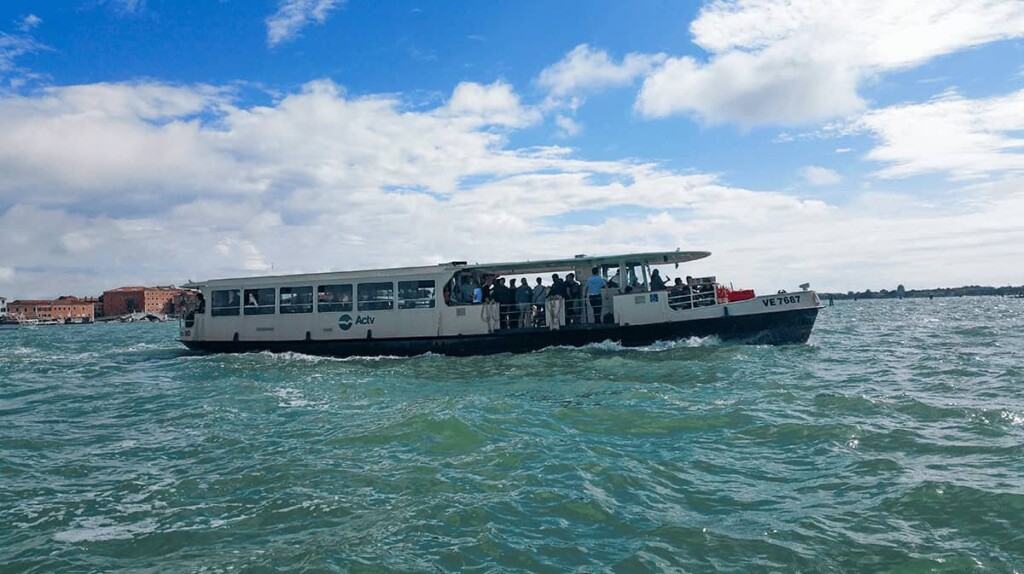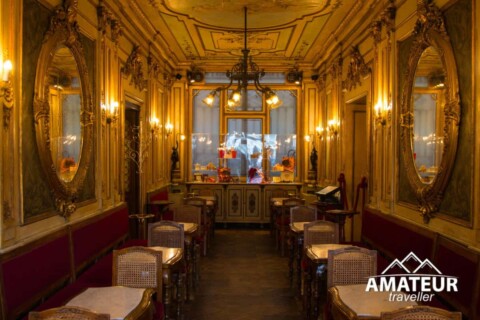The Complete Guide to Venice’s Vaporetto: Your Gateway to the Floating City
Venice, the crown jewel of the Veneto region, captivates millions of visitors each year with its labyrinthine canals, magnificent architecture, and timeless romantic atmosphere. Built on more than 100 small islands connected by over 400 bridges, this UNESCO World Heritage site presents a unique challenge: how do you navigate a city where cars are banned and streets are waterways? The answer lies in understanding Venice’s ingenious public transportation system, particularly the iconic vaporetto – your ticket to experiencing the city like a true Venetian.
What Exactly is a Vaporetto?
The term “vaporetto” comes from the Italian word “vapore,” meaning steam, harking back to the original steam-powered boats that first began operating in Venice in the late 19th century. Today’s vaporettos are modern diesel-powered waterbuses that serve as the backbone of Venice’s public transportation network, operated by ACTV (Azienda del Consorzio Trasporti Veneziano).
These distinctive vessels, recognizable by their white and blue color scheme, are specifically designed to navigate Venice’s shallow canals and accommodate the city’s unique infrastructure. Unlike the sleek gondolas or private water taxis, vaporettos are utilitarian workhorses that transport both locals and tourists throughout the city and surrounding islands. They range in size from smaller boats that hold around 100 passengers to larger vessels accommodating up to 230 people, all equipped with both indoor and outdoor seating areas.
The vaporetto system operates year-round, adapting to seasonal demands and weather conditions. During acqua alta (high tide) periods, when parts of Venice flood, vaporettos become even more essential, as they continue operating when walking becomes difficult or impossible in certain areas.

The Extensive Vaporetto Network: Connecting Venice and Beyond
Venice’s vaporetto network is remarkably comprehensive, consisting of over 20 different routes that connect not only the main islands of Venice but also the outer islands of the Venetian Lagoon. The system is divided into several categories:
Main Grand Canal Routes: Lines 1 and 2 are the most tourist-friendly, following the spectacular Grand Canal and stopping at major attractions. Line 1 makes all stops along the canal, offering a slower but more comprehensive journey, while Line 2 is faster with fewer stops.
Circular Routes: Lines 4.1 and 4.2 circle the main island of Venice in opposite directions, providing excellent views of the city’s perimeter and connecting areas not accessible via the Grand Canal routes.
Island Connections: Routes like 12, 14, and 18 connect Venice to the famous outer islands including Murano (known for glass-making), Burano (famous for lace and colorful houses), and Torcello (the lagoon’s first settlement). Line 3 connects to Pellestrina and Chioggia, extending your exploration possibilities.
Airport and Mainland Connections: Specialized routes connect Venice to Marco Polo Airport and the mainland, including Mestre and other Veneto destinations.
The network operates from approximately 5:00 AM to 2:00 AM, with reduced frequency during late evening and early morning hours. Summer schedules typically offer more frequent service to accommodate the increased tourist influx.
Why Choose the Vaporetto: Benefits That Go Beyond Transportation
Economic Advantages
When compared to Venice’s alternatives – gondola rides can cost €80-120 for 30-40 minutes, and water taxis charge €15-20 for short distances – vaporettos offer exceptional value. A single vaporetto ticket costs around €7.50 and is valid for 75 minutes from validation, allowing transfers between different lines. For visitors planning multiple trips, day passes (€20-25) or multi-day passes provide even better value.
The cost-effectiveness becomes particularly apparent when visiting the outer islands. A round-trip water taxi to Murano could cost over €100, while the vaporetto makes the same journey for the price of a standard ticket.
Unparalleled Scenic Experiences
Vaporettos provide front-row seats to Venice’s architectural masterpieces from a perspective that’s impossible to achieve on foot. As you glide along the Grand Canal, you’ll witness the evolution of Venetian architecture spanning over 1,000 years – from Byzantine palaces to Gothic facades, Renaissance mansions to Baroque churches.
The experience changes dramatically throughout the day. Morning light illuminates the pastel-colored palazzos with soft warmth, midday sun creates dramatic shadows and highlights architectural details, while evening transforms the canal into a golden pathway reflecting centuries of history. Night rides offer a completely different ambiance, with illuminated buildings creating magical reflections on the dark water.
From the vaporetto, you’ll see famous landmarks like the Rialto Bridge, Ca’ d’Oro, Palazzo Grassi, and the Peggy Guggenheim Collection from angles that reveal architectural details invisible from street level. The low perspective from the water provides intimate views of private gardens, hidden courtyards, and the intricate details of bridge undersides.
Practical Convenience and Comfort
Venice’s compact size can be deceiving – walking from one end to the other involves crossing numerous bridges and navigating crowded calli (narrow streets). After several hours of exploration, particularly in summer heat or winter cold, vaporettos provide welcome relief. The boats offer comfortable seating, weather protection, and restroom facilities on longer routes.
For travelers with mobility challenges, heavy luggage, or families with small children, vaporettos eliminate the physical demands of constant bridge climbing. Most stops are equipped with wheelchair accessibility, and boats have designated spaces for wheelchairs and strollers.
The predictable schedule and extensive route network make trip planning straightforward. Unlike private transportation, you don’t need reservations, and the frequent service means minimal waiting times at most stops.
Cultural Immersion and Local Life
Perhaps most importantly, vaporettos offer authentic glimpses into Venetian daily life that tourist-focused activities cannot provide. You’ll share space with locals commuting to work, students heading to Ca’ Foscari University, and residents returning from grocery shopping at the Rialto markets.
Observing this daily rhythm provides insights into how Venetians have adapted to their unique environment. You’ll see delivery boats supplying restaurants, construction workers transporting materials by barge, and emergency services navigating the same waterways that once carried merchants from across the known world.
Mastering the Vaporetto System: Insider Tips and Strategies
Ticketing Options and Best Practices
Understanding Venice’s ticketing system can save both money and frustration. Single tickets (€7.50) are valid for 75 minutes and allow transfers between routes, making them suitable for visitors making one or two journeys. However, day passes quickly become economical for active explorers.
The ACTV offers several pass options:
- 24-hour pass: €20-25 (depending on season)
- 48-hour pass: €30-35
- 72-hour pass: €40-45
- 7-day pass: €60-70
These passes include unlimited travel on all vaporetto lines within Venice and the islands, plus city buses on the mainland. Tourist passes also include access to some connecting bus routes, making them excellent value for comprehensive exploration.
Pro tip: Purchase tickets from authorized vendors or machines to avoid higher on-board prices. Many hotels can provide tickets, and tabacchi (tobacco shops) throughout the city sell them at standard rates.
Validation and Compliance
Ticket validation is mandatory and strictly enforced. Yellow validation machines are located at all stops and on all boats – scan your ticket immediately upon boarding. Inspectors regularly check tickets and impose substantial fines (€50+) for violations, including expired tickets or failure to validate.
Keep your validated ticket throughout your journey and any transfers within the 75-minute window. The ticket shows the validation time and date, which inspectors use to determine validity.
Route Planning and Navigation
Venice’s vaporetto stops can be confusing for first-time visitors. Many stops serve multiple routes in different directions, so pay attention to:
- Route numbers and destination signs
- Direction indicators (many stops have separate platforms for different directions)
- Digital displays showing arrival times and destinations
- Maps posted at each stop showing the complete route network
Popular stops like San Marco and Rialto can be extremely crowded, especially during peak tourist season (April-October). Consider walking to less crowded nearby stops for a more comfortable boarding experience.
Strategic Timing and Crowd Avoidance
Vaporettos experience distinct rush hour patterns. Morning hours (7:30-9:30 AM) and early evening (5:00-7:00 PM) see heavy local commuter traffic. Mid-morning and early afternoon typically offer the most comfortable travel conditions for tourists.
Summer evenings create beautiful photographic conditions but also draw crowds seeking sunset views along the Grand Canal. Consider taking the reverse direction of popular routes to avoid the heaviest tourist concentrations.
Weather Considerations and Seasonal Variations
Venice’s weather significantly impacts the vaporetto experience. Summer heat makes indoor seating more comfortable, while cooler months allow enjoyment of outdoor areas with fewer crowds. Rain doesn’t stop service, but outdoor areas may be less pleasant.
Winter brings the possibility of fog, which can delay or modify routes. During acqua alta events, some stops may be temporarily inaccessible, but service generally continues with minor adjustments.
Exploring Venice’s Islands: Extended Adventures by Vaporetto
The vaporetto network opens access to the Venetian Lagoon’s fascinating outer islands, each offering distinct cultural experiences and artisanal traditions.
Murano (Lines 4.1, 4.2, 12, 13): Famous worldwide for glassmaking, Murano has been the center of Venetian glass production since 1291. Visit working furnaces, browse showrooms, and explore the Glass Museum. The island also features charming canals and the beautiful Church of Santa Maria e San Donato.
Burano (Line 12): This photographer’s paradise features impossibly colorful houses, traditional lace-making, and some of the lagoon’s best seafood restaurants. The island’s vibrant appearance served a practical purpose – helping fishermen identify their homes from a distance.
Torcello (Line 12, continuation from Burano): Once a thriving commercial center predating Venice itself, Torcello now offers peaceful countryside atmosphere and remarkable Byzantine mosaics in the Cathedral of Santa Maria Assunta.
Lido (Lines 1, 5.1, 5.2, 6): Venice’s beach resort features long sandy shores, Belle Époque architecture, and the famous Hotel des Bains. The Lido hosts the prestigious Venice International Film Festival each September.
The Environmental and Cultural Impact
Vaporettos represent more than transportation – they’re part of Venice’s environmental sustainability efforts. The ACTV has been modernizing its fleet with more efficient engines and exploring hybrid and electric alternatives to reduce emissions in the delicate lagoon ecosystem.
Using vaporettos instead of private water taxis significantly reduces individual environmental impact while supporting the public infrastructure that Venetians depend upon daily. This conscious choice helps maintain the balance between tourism and local life that’s essential to Venice’s survival as a living city rather than merely a museum.
Making the Most of Your Vaporetto Experience
To maximize your vaporetto adventures, consider these advanced strategies:
Combine transportation with sightseeing: Treat vaporetto rides as attraction experiences rather than merely getting from point A to B. The Grand Canal route offers better views than many paid tours at a fraction of the cost.
Use less popular routes for unique perspectives: Lines 4.1 and 4.2 provide stunning views of Venice’s silhouette from the lagoon, while route 2 offers quick access to San Giorgio Maggiore for panoramic city views.
Plan island-hopping itineraries: Multi-day passes make exploring multiple islands economical. Consider staying overnight on Lido for a different perspective on Venetian life.
Respect local etiquette: Allow locals to board first during commuter hours, keep backpacks in front of you in crowded conditions, and move to the center of the boat to allow others to board.
Conclusion: Your Floating Gateway to Venetian Magic
The vaporetto system represents far more than a practical solution to Venice’s unique transportation challenges – it’s an integral part of the Venetian experience that connects you to centuries of maritime tradition while providing modern comfort and convenience. From the practical benefits of avoiding crowded walkways and bridge climbs to the unparalleled scenic beauty of approaching St. Mark’s Square from the water, vaporettos offer perspectives on Venice that simply cannot be replicated through other means of travel.
Whether you’re marveling at Gothic palaces from the Grand Canal, island-hopping to discover artisanal traditions, or simply enjoying the rhythm of daily Venetian life, the vaporetto transforms transportation into exploration and necessity into pleasure. For the price of a few cups of coffee in St. Mark’s Square, you gain access to a comprehensive network that can occupy days of discovery while providing authentic insights into how this remarkable city continues to function in the 21st century.
As you plan your Venice adventure, remember that the vaporetto isn’t just how you’ll get around – it’s how you’ll truly begin to understand the unique relationship between Venice and its waters, the ingenious adaptations that allow life to flourish in this impossible city, and the timeless beauty that continues to inspire visitors from around the world. Step aboard, validate your ticket, and prepare for a journey that’s been enchanting travelers for over a century. Welcome to Venice – the vaporetto way.
Useful Information









